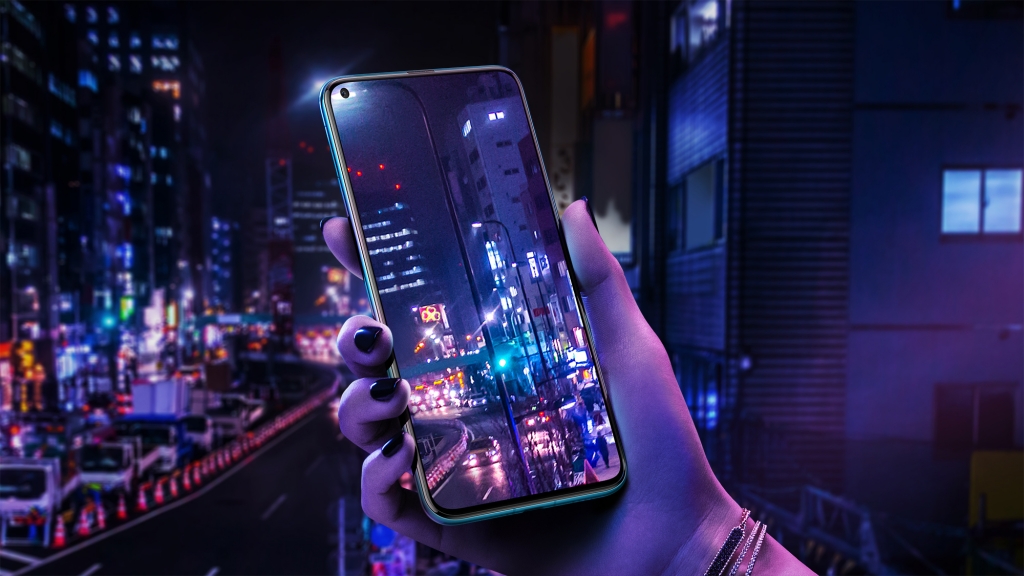
HUAWEI nova 4: The Absolute Bezel-Less Experience With the Revolutionary Under-Display Camera technology
As one of its most important missions, Huawei aims to provide the ultimate experience to younger generations through advanced technology and craftsmanship. The latest testament to this corporate vision is its newly released flagship entertainment smartphone, the HUAWEI nova 4. The product's 6.4-inch "absolute bezel-less" display offers an impressive screen-to-body ratio 86.3% (screen-to-body ratio 91.8%), and sports HUAWEI's proprietary under-display camera technology which revolutionarily hides the front camera under the LCD screen. As a result, the entire screen delivers a completely natural and flawless viewing experience on all four sides of the phone, and provides users with a sense of freedom from the obstructive shackles of the notched design.
- The Revolutionary Under-Display Camera Technology
The screen-to-body ratio of smartphones has soared since 2017, with the maturation of bezel-less display technology. From the first-gen 18:9 screen when the front camera is outside of display, to the various designs of the second-gen 19:9 notch display and dewdrop display when the front camera is inside the outline of display, mobile phone manufacturers have collectively pursued in perfecting an absolute bezel-less design. However, there was always an insurmountable roadblock preventing the achievement of such perfection, and that is the front camera. Although design innovations continue to improve by gradually reducing the area of the camera itself, their noticeable flaws have always bothered us in some sense. Since 2018, several brands have made new attempts to move the front camera away by adding structural components such as slide rails, but this causes concern about their stability and dustproofness. Consumers ultimately remain more optimistic towards an integrated phone body, which is why the nova 4 designers have deserted any slider component while striving to "get rid of" the front camera.
After working tirelessly for more than 20 months since 2016, HUAWEI has finally pioneered its groundbreaking under-display camera technology. In previous designs, the top surface of the front camera was attached to the glass cover of the screen and surrounded by a black plastic part (known as the notch). On the nova 4, the front camera was mounted on the lower layer of the screen, which completely eliminated the need of the notch. This design not only guarantees the integrity of the LCD display, but also visually conceals the camera so that the entire screen has a complete natural feel to it.
- The Pursuit of Ultimate Craftsmanship
HUAWEI cooperated with the industry's top supplier without reducing the camera specifications, and developed the smallest front-facing camera. The lens diameter is only 3.05mm, which is 20% shorter than industry standards, and at the beginning, there were more than 10 different LCD perforating solutions. After extensive research and intensive effort on the selection and arrangement of each individual layer of film, the optimal method was finally acquired.
The nova 4 deploys the industry's first "blind-hole" solution, perforating the screen by a depth of only about 1mm with a controlled tolerance within 0.1 mm. The process is extremely complicated. Although the initial production yield was only a single digit, through continuous efforts, it gradually reached the industry standard.
- The Absolute Selfie Experience
Although the design of the ultimate under-display camera has been perfected, its placement must also be very particular. In this case, the Nova 4 engineers have researched thousands of third-party apps, and R&D staff even developed a program to test the visual impact of the perforation point for the camera. Placing the camera in the upper middle would seem aesthetic at first glance, but conspicuous and easily noticeable during use – for example, it would easily affect users' interaction with their phones in gaming and video apps. Therefore, after much deliberation, it was decided that the Nova 4's front camera should be placed in the upper left corner (based on the perspective of users) of the screen.
In addition, to provide users with the best selfie experience, HUAWEI has undergone extensive consumer research and user experience engineering study. It is found that most users would tilt their head slightly to the right and look straight at the camera while taking selfies.
Placing the front camera in the upper left corner, therefore, would best ensure the camera to be in line with the customary selfie angle of the user. This will further optimize the user's line of sight to make their eyes look more beautiful, thus creating the perfect (golden) selfie angle.
The HUAWEI Nova 4 is available in Saudi market now in Crush Blue and Bright Black at a price of 1899SAR.


























